EASY RICHES
Tasteless Tinies
Truman Capote said something to the effect that the difference between the super-rich and the rest of us is that the super-rich eat tiny vegetables. So there’s another plus for gardening: It’s easy to be super-rich, or at least eat the way the super-rich do.
Not that smaller is always better in the world of vegetables. A cucumber picked undersized does not taste better and is surely not as juicy than one allowed to swell up before harvest — as long as that full-sized one is picked before its skin yellows and seeds start to harden.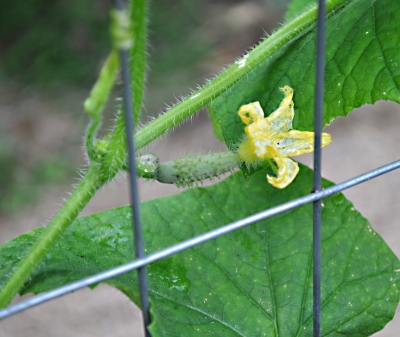
Similarly, the taste of baby carrots can’t compare with fully grown ones, unless the “baby” size is how big the carrots are supposed to be when fully mature. Sunlight, nutrients, water, and air come together in carrot roots to make cells for growth and carbohydrates, such as sugars, the latter not accumulating until carrots have achieved sufficient size. Beyond that point, carrot texture and flavor start to suffer.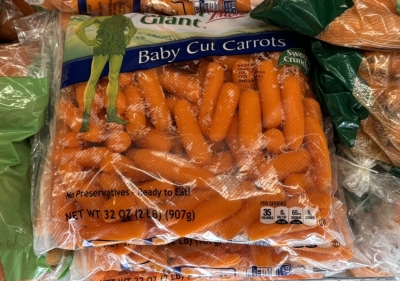
”Baby carrots” you buy in the supermarket, incidentally, are not actually babies, but are full-sized carrots that have been cut up and shaped on lathes by elves.
One “course” that I was served of a tasting menu in a fancy restaurant consisted of an eight inch length of wood along the top of with was a row of vertical metal spikes (nails?). Atop each spike was impaled a different tiny vegetable. A turnip, top and all, a carrot, and a few other whose memory escapes me. It was a work of art but, between the size and the quantity of vegetation, not much flavor.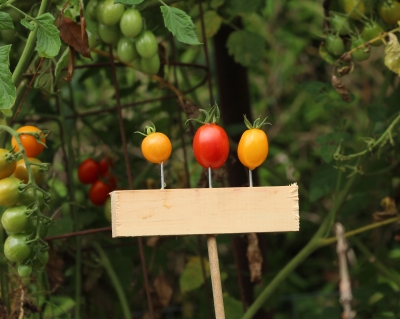
Convenient Tinies
There’s no arguing that baby vegetables are more fun and convenient to eat. (But why would a super-rich person, who could afford to pay someone to peel grapes for them, need more convenience?) I do admit to the convenience stopping to get a bag of “baby” carrots for snacking when traveling.
Fun and convenience must be what account for the popularity of supermarket cherry tomatoes. Years ago at least, the bulk of them were the variety Red Cherry, which tasted awful not because they are small but because they are Red Cherry. Many tastier cherry tomatoes exist, most notably to me being Sungold, with a delectable sweet-tart flavor. Grow this one. You won’t find Sungold in most markets because it cracks easily, which is not a problem for me since the fruits are eaten either as they are picked or shortly thereafter.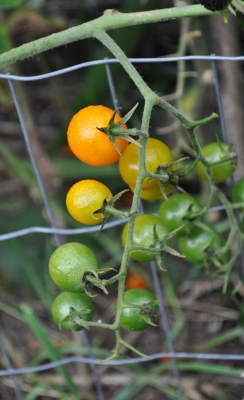
Miniature cauliflower — “minicauli” — is another baby vegetable that is fun and convenient to eat, but tastes the same as full-size cauliflower. The way to grow minicaulis is by planting out any variety of cauliflower at a six inch spacing each way and letting competition among plants keep them dwarf as they mature.
Tasty Tinies
Of course, the main attraction of tiny vegetables is their perceived gustatory superiority. And there are some vegetables that are, in fact, most delicate, tender, and tasty at this stage. Fine examples of vegetables that reach gustatory perfection early in their growth are zucchini and other summer squashes. You can even pick zucchinis before their blossoms have wilted and been shed, eating the tasty blossoms along with the fruit.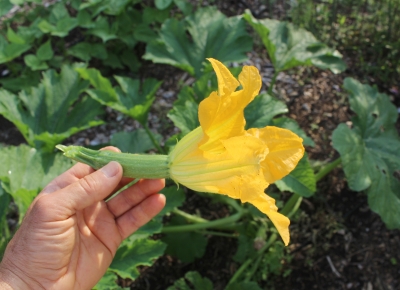
Every gardener knows how fast a zucchini can grow from the size of a carrot to that of a baseball bat. A few days’ delay in harvest rapidly plumps up zucchinis and the wallet of any farmer who is paid for poundage, thus accounting for the extra cost of vegetables harvested while still tiny. For us backyard gardeners, though, frequent picking of tiny zucchinis gives us tastier zucchinis and keeps our kitchens from being inundated with this vegetable.
And then there are vegetables that take on a different character if picked while still tiny; they’re not necessarily better, but they’re different. As green beans mature, the seeds within the pods expand and contribute to the flavor and texture. When baby-sized, beans are almost all pod, the beginnings of seeds hardly noticeable.
Baby corn is similarly dramatically different from large ears of sweet corn whose kernels are plumped full of milky, sweet juice. 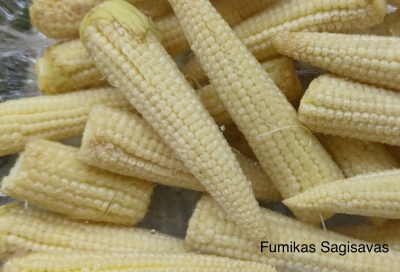 But they’re both good. Problem is that each corn stalk produces one or a couple of ears, making eating baby corn quite a sacrifice of full-size ears, one that I wouldn’t make for one of my favorite vegetables.
But they’re both good. Problem is that each corn stalk produces one or a couple of ears, making eating baby corn quite a sacrifice of full-size ears, one that I wouldn’t make for one of my favorite vegetables.
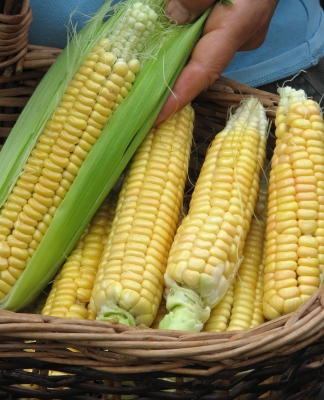
Any variety of lettuce, especially heading lettuces, takes on a different taste and textural quality as it matures. As lettuces grow up, the leaves of some turn buttery, those of others become crisp only along their ribs, and still others become crispheads. Flavors may also take on distinctive qualities.
Pretty much all varieties of lettuce are similar and good eating when plants are young, with diaphanous, soft leaves and delicate flavor. Like other tiny vegetables, they’re easy to grow — and eating them makes you feel rich.


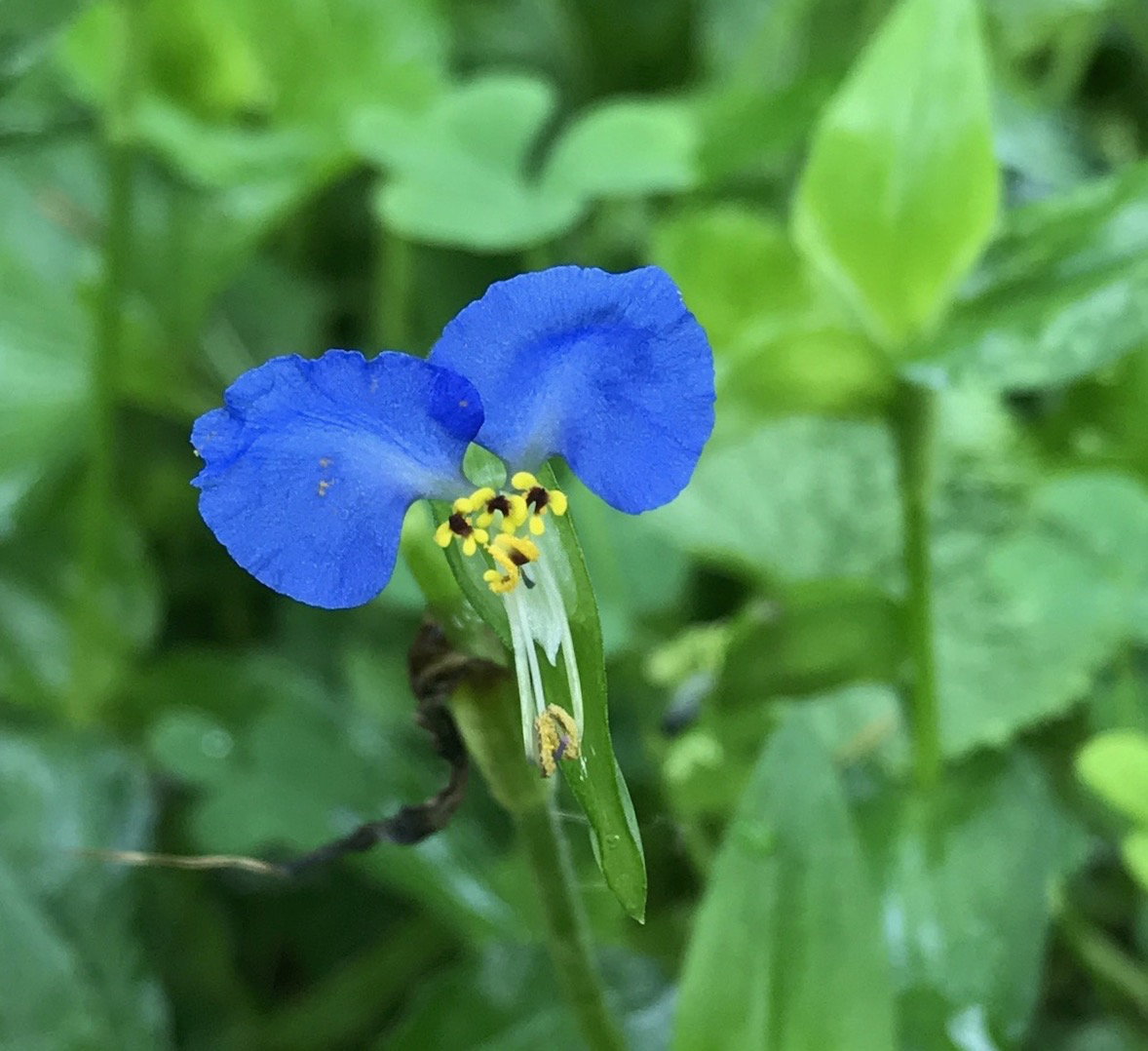

Mummy Berries.
Yikes my blueberries have mummy berries!
Not covered on all 10 mature bushes but a few here and there.
I live in the old 5b apparently now 6a” zone.
Any ideas on how to deal w/o using a fungicide?
Thanks in advance
In decades of growing blueberries, I’ve never had this problem. I avoid it by every year covering the ground with a 3 inch mulch of some weed-free organic material, such as arborists wood chips, sawdust, wood shavings, or leaves. I mulch in autumn after all the leaves and, if they’re present, mummy berries have dropped. The covering prevents overwintering spores from infecting plants in spring. This has been documented in a research paper, not something that I came up withh or that works onloy in my planting. By the way, the bushes also respond very well to this annual fall mulch,
Hi Lee ! Should I put compost in each fall after all the debris and diseased plant part removed ? When I add compost, should I remove the existing wood chips (like push them aside to the edge of the bed) and then apply compost and finish with more wood chips ? Will that be just alright to top dress the compost onto the existing wood chip ? Thanks.
Hi Sheila, Yes, put down the compost after cleaning up the garden. I would not put compost on top of the wood chips unless that chip layer is pretty well decomposed or else just a very thin layer. If neither is the case, remove the wood chips, then apply compost. Usually there’d be little need for the wood chips inthe bed if you’re applying compost.
Thanks Lee. Isn’t putting wood chips on top of the compost would further enhance the weed suppression and moisture retention capability ? Thanks.
Yes, the wood chips would do that. But then I would scoop off that layer before digging into the compost. In a wet season, a compost covered only with wood chips could get waterlogged. I cover my finished composts with EPDM roofing materia. It’s impervious to water and heavy enough not to blow in the wiind.
Interesting! I did not know about the fascination with tiny vegetables. I learned something. Thank You – Connie on Lookout Mountain in NE Alabama
Thanks for all your helpful info.
One question- when do you harvest your tomatoes? At the “breaking point” or do you wait for full ripeness on vine?
I usually harvest at full ripeness, except towards the end of the season when the sun is lower and the air cooler. They then ripen better in more warmth, even if off the vine.
Thanks Lee. I will have to do this task this Fall right after the growing season done and garden cleanup.